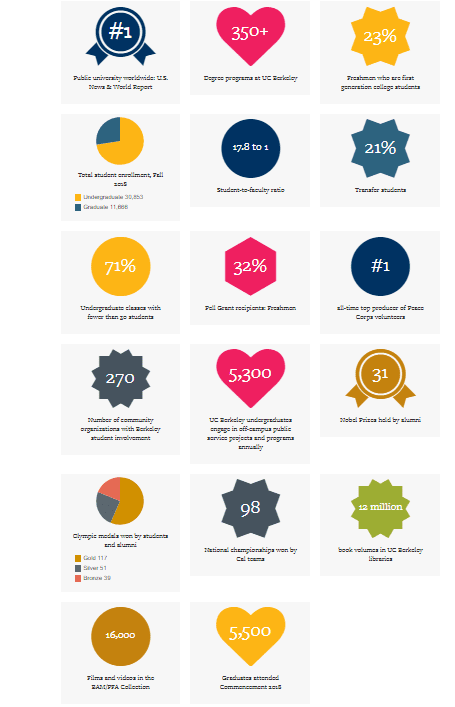Studying at Berkeley Law
Berkeley Law’s Community
Warm, collegial, and caring. Those are words often used by our students to describe the culture and community at Berkeley Law. But what drives our community to be as such?
We believe that the atmosphere at Berkeley Law nurtures the best in people, both intellectually and personally. We challenge students to extend themselves and to excel. But we discourage rivalry by refraining from assigning traditional letter grades, calculating GPAs, or assigning class rankings. Therefore, there’s no incentive to compete against one another for the top spot in your class or to outrank your peers. Activities like journal write-on and on-campus recruiting use more equitable systems to allow all students to compete for a spot or gain an interview. Our grading system also takes away some of the pressure, allowing students to participate in things like our Pro Bono Program or join one of our 80+ student organizations.
Berkeley Law faculty members are approachable and want to support our students’ success. Our 6.5-1 student to faculty ratio allows for more contact with instructors, either inside the classroom, at office hours, or while helping with a research project.
Don’t just take our word for it. Hear directly from our Admissions Ambassadors, or watch a student life panel on what it’s like to be at Berkeley Law:
Your First Year at Berkeley Law
The first year of law school, also known as 1L year, is a time where you will receive the foundational knowledge necessary to become a lawyer, and you may also start to explore areas of the law that interest you through extracurriculars.
What do you study in the 1L year? At most law schools, your 1L curriculum is prescribed. The required courses for Berkeley Law are described here. However, we know that students are excited to explore different areas of the law. To that end, our 1L curriculum allows students to take up to two electives in the spring of your first year.
The incoming class each year is split into nine small modules, or “mods” as they are more commonly known, with about 30-40 students per mod. The majority of 1L courses are taken with your small mod or a combination of three mods. Therefore, class sizes will range from small seminars with 12-18 students to large courses with 120+ students. More than just a way of organizing the class, mods often become a social group, planning outings and events with one another throughout the year.
Beyond the classroom, nearly all Berkeley Law students participate in one of our Student-Initiated Legal Services Projects, or SLPS (pronounced “slips”), for short. Each year, second and third year students lead pro bono projects in areas that they are truly passionate about. Pro bono work is an opportunity for students as early as their first semester to gain practical lawyering skills, work with attorneys, and explore their own interests. In addition to pro bono projects, 1L students can also join 12 of the 13 student-run journals or one of the student organizations.
Second and Third Year
The last two years at Berkeley Law are an opportunity for students to specialize in an area, continue to explore different topics, or some combination of the two. Beyond fulfilling the basic graduation requirements, students can choose any combination of elective courses or experiential education courses to complete their degree.
What experiential learning opportunities do Berkeley Law students have? Starting in the second year, students can earn academic credit for any of the following:
- Participating in one of our fourteen Clinics
- Completing a Field Placement, either part-time, full-time, near, or away
- Working with a judge in a Judicial Externship
- Joining the Domestic Violence Practicum or the Veterans Law Practicum
Second and third year students also keep themselves busy being leaders for SLPS, journals, student organizations, or by completing research, independent pro bono projects, participating in advocacy competitions, and many others.
U.C. Berkeley’s Campus
One of the benefits of Berkeley Law is that it is situated on the campus of U.C. Berkeley, which known around the world for its intellectually adventurous and highly distinguished faculty and students. While our law students spend most of their time within the Law Building, there are many opportunities to engage with the greater U.C. Berkeley campus. For example, law students can take courses in other departments to count toward their JD degree, or they can go as far as completing a concurrent degree. Why limit yourself to only one area of such a world class university?
A bit more on U.C. Berkeley’s accolades:
Berkeley is in the Top 6 worldwide for the number of Nobel prizes awarded to its faculty. The university’s faculty also includes almost 350 members of the National Academy of Sciences and the American Academy of Arts and Sciences. It also claims more than 135 Guggenheim Fellows—more than any other university in the country, with law faculty well-represented.
The university is also recognized for the scope of its research and the size and quality of its libraries and laboratories. One measure of achievement is that the National Research Council ranked Berkeley as the leading U.S. university for graduate studies.
The campus sponsors thousands of educational and cultural events, including lectures, symposia, seminars, concerts, plays, dance performances, and exhibits that showcase art, photography, and architecture. Most of these and other on-campus events are open to registered students at little or no cost.
